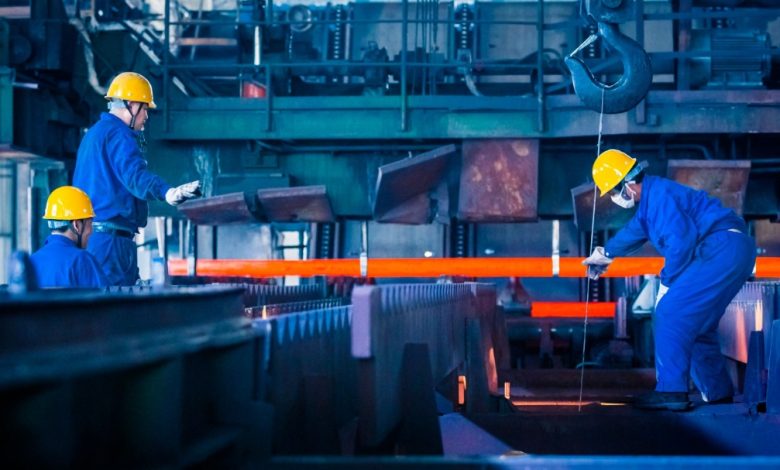Best Practices to Manage Workers Safety in a Manufacturing Plant

The importance of an effective workers’ safety program cannot be overstated in the manufacturing sector. In 2016, the Bureau of Labor Statistics (BLS) recorded 4,836 fatalities in private industry; these fatalities resulted in $47 billion in lost productivity. While most companies have an established worker safety program. And there are always best practices to improve the program and avoid fines from OSHA and lawsuits from employees. Here are four best practices to help you manage workers’ safety in your manufacturing plant.
Working at Manufacturing Plant
Like any job, manufacturing plants can have their share of hazards for employees. Serious injuries and even fatalities occur in manufacturing plants. Particularly in work areas involving machinery, chemicals or other materials that are hazardous. The Occupational Safety and Health Administration (OSHA) is a federal agency established by Congress in 1970 that enforces workplace safety rules, standards, and guidelines set forth by Congress through legislation. It is also a clearinghouse for information on how to improve safety measures at workplaces across America. Take steps to make your manufacturing plant safer. You will not only protect your workers but you’ll keep yourself out of trouble with OSHA.
The 10 Tips That Can Enhance Workers Safety in Your Manufacturing Plant:
- Provide Safety Instruction Be sure to properly train new workers when they start working at your plant. And as well as re-train workers who haven’t worked in your facility recently enough so that their knowledge becomes outdated.
- Use Proper Materials If there are particular chemicals used in your manufacturing process that could potentially cause harm if mishandled, use proper equipment to handle these materials.
- Maintain Equipment Regularly Inspect equipment regularly—especially before it’s used—and ensure it is maintained according to the manufacturer’s recommendations. Also, ensure there are no defective parts that could pose a threat if used while faulty.
- Use Appropriate PPE Make sure workers wear personal protective equipment appropriate for each task performed. PPE reduces the risk of injury and illness caused by exposure to substances found in manufacturing processes. Examples include using goggles, gloves, earplugs, or respirators as needed.
- Keep Hazardous Products Out Of Reach When possible, store flammable materials away from ignition sources such as heaters and open flames. Avoid spills of toxic products that could contaminate drinking water supplies.
- Establish Walkways For Long Distances Some industrial processes require workers to traverse long distances over rough terrain and under dangerous conditions. Establish walkways with handrails or guardrails where necessary to prevent falls due to tripping or slipping. Always make sure stairs are sturdy and secure before use.
- Evaluate Hazards Employees should conduct a hazard evaluation to assess risks in each manufacturing process. Once identified, take necessary precautions to reduce or eliminate potential dangers. Performing hazard evaluations and following a systematic approach in your manufacturing plant will help prevent accidents and save lives.
- Communicate Workplace Safety Rules The best way to avoid a manufacturing plant accident is by encouraging safe behavior. Communicate safety rules with workers and clearly display safety posters throughout your plant. Ensure all workers know what to do in case of an emergency, and always supervise worker activities, especially during heavy workloads or large projects that could lead to more mistakes and accidents.
- Practice Fire Safety Awareness There are many common causes of fires in manufacturing plants including electrical wiring problems, mechanical equipment malfunctions, chemical reactions, and explosions. Follow fire safety procedures to minimize your plant’s risk of fires. Store flammable chemicals in a dry, ventilated, and fire-resistant area. Use non-flammable alternatives for dangerous processes that use flame or heat. Have portable fire extinguishers readily available, and have regular inspections conducted by qualified personnel to ensure everything is in good order and ready for use.
- Using advanced safety and compliance software helps workers stay safe and can also help companies monitor their own safety statistics. Increased use of social networks, such as Facebook and Twitter, has also made it possible for companies to track safety trends and share best practices with other companies across industries.
iCM for Compliance in Highly Regulated Industries
Integrated Chemical Management (iCM) provides a standards-based integrated compliance software that helps ensure worker safety while improving productivity, compliance, and regulatory oversight. iCM helps manufacturing companies like yours comply with regulations such as OSHA, EPA, CPSC, and more. Learn how iCM can help you ensure workers’ safety.
Conclusion
Because workers should always put safety first, managers and employers should follow certain practices when it comes to workplace safety. Workers must never cut corners or rush through tasks if it means potentially harming themselves or others. We offer all of our clients our full range of services for meeting compliance standards including checks, inspections, audits, and more.




